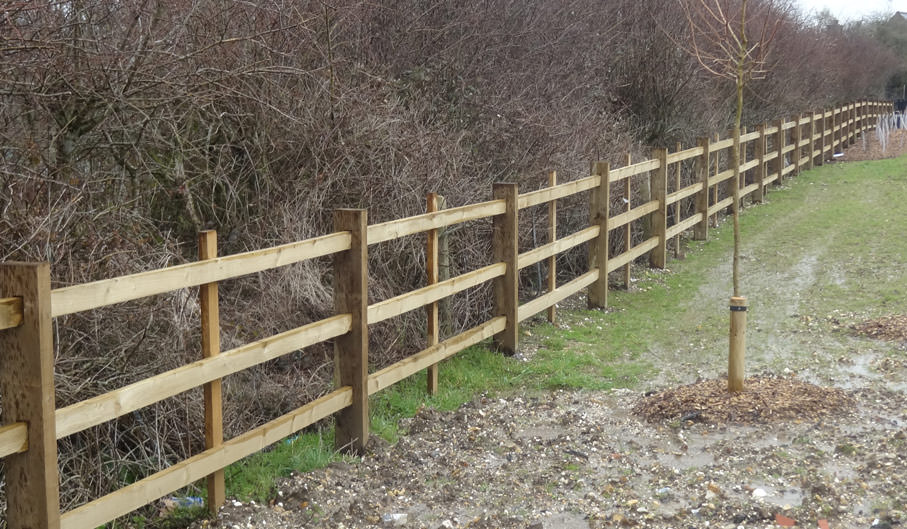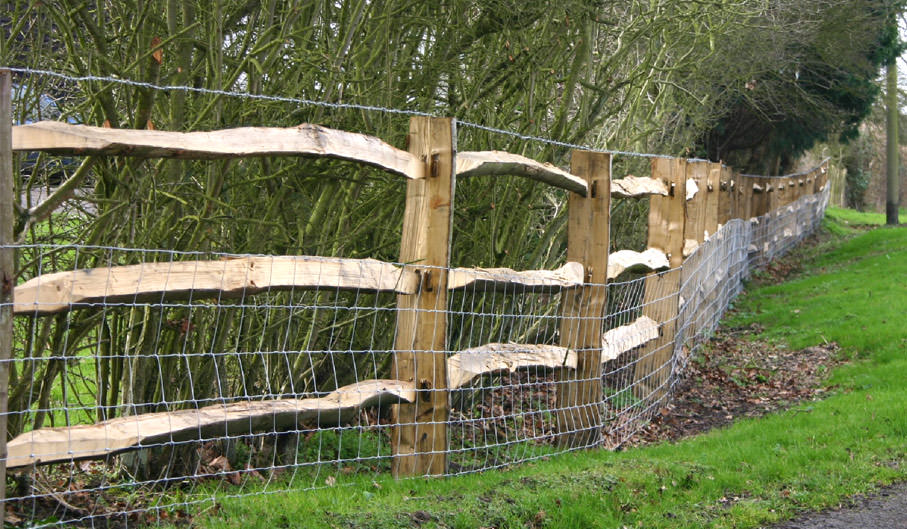The Buyer’s Guide to Fencing in South Auckland for Long-Term Security
The Buyer’s Guide to Fencing in South Auckland for Long-Term Security
Blog Article
A Comprehensive Overview to Fencing Install: What You Required to Know Regarding Secure Fencing Provider
When it comes to setting up a fence, you have actually got a lot to contemplate. You'll need to evaluate your home and choose if you want to tackle the setup on your own or work with a specialist.
Recognizing Different Kinds Of Fence Products
When you're picking a fencing, comprehending the different types of secure fencing products is essential. Each product uses distinct advantages and downsides, affecting your choice. Wood gives a classic look and can be personalized, yet it needs normal upkeep and may rot with time. Plastic is low-maintenance and long lasting, standing up to fading and pests, yet it can be more expensive upfront. Chain-link fence is cost-effective and useful for confining large locations, though it does not have personal privacy and visual allure. Steel fence, like wrought iron or aluminum, supplies stamina and elegance however might require rust defense. Composite materials mix the ideal of timber and plastic, supplying resilience with a natural look. Consider your budget plan, desired looks, and maintenance preferences when assessing these options. Inevitably, choosing the right material will certainly help you develop a fencing that fulfills your demands and enhances your home's value.
Analyzing Your Residential Property and Secure Fencing Needs
Prior to you begin your fencing installation, it's vital to evaluate your residential property boundaries and the objective of your secure fencing. Recognizing regional laws and licenses will also assist you avoid any kind of legal concerns down the line. By taking into consideration these factors, you'll assure your fence fulfills both your needs and community criteria.
Residential Property Boundaries and Lines
Recognizing your home limits is necessary for an effective fence setup, as it not only helps you determine where your fence will go however additionally guarantees you're valuing your next-door neighbors' room. Begin by reviewing your residential or commercial property act or study, which commonly lays out the specific borders. You could also intend to consult with a specialist land surveyor if you're unsure.
Keep in mind, regional zoning regulations might dictate fencing placement and elevation, so examine those policies as well. Taking these actions assurances your fence is appropriately placed and certified, making the entire process smoother for you.
Purpose of Fencing
Fence offers numerous functions that can greatly boost your building. It supplies security by producing an obstacle that discourages intruders and shields your valuables. Second, it supplies privacy, allowing you to enjoy your outside space without fretting about spying eyes. Third, secure fencing can specify your home boundaries, making it clear where your space finishes and your next-door neighbor's starts. In addition, it can enhance the aesthetic allure of your home, including personality and design while enhancing aesthetic allure. Finally, a well-placed fence can help handle sound from close-by roadways or next-door neighbors and also keep animals and youngsters secure. By assessing your particular requirements, you can choose the right sort of secure fencing to achieve these benefits successfully.

Local Rules and Permits
How can you ensure your fence setup complies with local guidelines? Some locations call for authorizations for any type of new fencing, while others might only require them for taller structures.
Furthermore, consider residential or commercial property lines and any type of easements on your land. Marking your boundaries can prevent disputes with neighbors or potential lawful issues. By recognizing these laws ahead of time, you can stay clear of pricey errors and ascertain your fence is developed to last, boosting both your residential property's worth and your assurance.
Local Regulations and Permits for Fence
Before you start your fencing project, it is necessary to inspect neighborhood policies and acquire any type of essential permits. Each city or region has its very own policies regarding fence elevation, materials, and positioning. These regulations assure that your fencing conforms with safety and security standards and neighborhood visual appeals.
Begin by visiting your regional zoning office or their website to locate particular demands. Fence Contractors. You might need to submit a fence plan, detailing dimensions and products. Some areas may even need a survey to validate building limits. Do not forget to take into account any type of house owners' organization (HOA) standards, as they can enforce additional restrictions.
Overlooking to follow these laws can lead to penalties or forced removal of your fence, wasting both time and money. Take the time to study and protect the appropriate authorizations for a smooth installment procedure. This step is essential in ensuring your project lines up with local regulations and community requirements.
Picking Between Do It Yourself Setup and Professional Providers
Are you taking into consideration whether to tackle the fence installation yourself or work with a professional? If you're useful and have experience with similar tasks, DIY could conserve you cash.
Setting up a fencing takes time, and if you're handling an active routine, working with an expert can assure it obtains done effectively. If your backyard has tough surface or particular style demands, experts bring know-how that can make a distinction.
Lastly, factor in regional regulations. A specialist recognizes the authorizations and codes needed, helping you prevent prospective fines. Inevitably, consider your abilities, time, intricacy, and laws to make the most effective selection for your secure fencing project.
Step-by-Step Guide to Fence Installment
As soon as you've decided to progress with your fence setup, following an organized detailed technique will certainly assure a smooth procedure. Start by noting the fence line with stakes and string to imagine the design. Next, check neighborhood guidelines to verify compliance with height and home lines.
Dig article holes a minimum of two feet deep, spaced according to your fence type-- typically 6 to 8 feet apart. Insert the messages right into the openings and fill them with concrete for stability. Once the posts are established, connect the straight rails or panels, ensuring they're degree.
Protect the panels or pickets, verifying they align properly. If you're making use of use this link gates, mount them last, ensuring they turn freely. Check for any type of loosened links and make needed modifications. Your fencing must now be ready to improve your residential or commercial property and give the personal privacy or protection you require!
Upkeep Tips for Long Life of Your Fencing
To keep your fence looking terrific and long lasting much longer, normal maintenance is crucial. You must establish up a cleaning timetable, evaluate for any damages, and use protective finishes as required. By staying aggressive with these tasks, you'll ensure your fence remains durable look at more info and appealing for years to find.
Normal Cleansing Schedule
While it may be easy to overlook, developing a normal cleansing routine is crucial for maintaining the long life of your fencing. Begin by rinsing your fence with water a minimum of once every period to get rid of dust and debris. For wooden fencings, utilize a gentle soap service and a soft brush to scrub away any mold or mold. Do not forget to look for any kind of corrosion on steel fences; a cord brush can aid eliminate it, followed by a layer of rust-resistant paint. If you stay in an area with heavy pollen or dirt, you may wish to enhance your cleaning regularity. Keeping your fencing clean not only enhances its appearance however likewise prolongs its life, saving you cash over time.
Check for Damage
Routinely examining your fence for damage is crucial if you desire to maintain its integrity and longevity. Beginning by strolling around your fencing to look for visible indications of wear, such as cracks, loose boards, or rust. Examine for any signs of pests, like termites or woodpeckers, that might compromise your fencing's structure.
Apply Protective Coatings
After inspecting your fencing for damage, using safety layers is a vital action in ensuring its long life. Relying on the product, you'll wish to choose the appropriate sort of finish. For wood fencings, a high-quality sealer or wood stain can prevent dampness absorption and hinder parasites. If your fencing is vinyl or metal, think about a UV-protective spray or paint to stop fading and rust.
Make sure to cleanse the surface thoroughly prior to application, as dirt and grime can weaken the coating's efficiency. Use the layer in completely dry climate for far better adhesion, and don't forget to comply with the manufacturer's instructions for the best results. On a regular basis reapply every couple of years to maintain your fencing looking great and standing strong against the aspects.
Cost Considerations and Budgeting for Your Fencing Project
When preparing your fencing project, recognizing cost considerations is important to staying within budget plan. Begin by identifying the kind of product you want, as prices can vary substantially in between timber, vinyl, and steel. Do not forget to consider labor expenses-- hiring experts may conserve you time but can enhance your total costs.
Next, gauge your building to determine the linear footage needed, as this straight effects product prices. Additionally, consider any kind of authorizations you could need, which can include in your budget.

Lastly, it's a great concept to set aside a contingency fund for unanticipated costs. By preparing thoroughly and considering these factors, you can create a sensible budget plan that fulfills your fencing needs without damaging the financial institution.
Often Asked Concerns
Exactly how Lengthy Does the Typical Fencing Installment Take?
The average fencing setup usually takes one to three days, depending on the fencing kind and dimension of your backyard. You'll require to consider any type of hold-ups as a result of weather or permit demands too.
What Should I Do if My Fence Is Harmed?
If your fence is damaged, first analyze the level of the damage. Repair minor issues on your own, but for significant problems, consider contacting a professional. Don't wait also long; it'll aid prevent even more issues.
Can I Set Up a Fencing on a Slope?
Yes, you can mount a fence on an incline. You'll require to adjust your installation technique, either by tipping the panels down or using a racked design to ensure security and proper alignment with the terrain.
What Are the very best Practices for Fencing Painting?
To repaint your fencing successfully, start with correct cleaning and sanding. Usage top quality paint and apply in even strokes. Don't fail to remember to choose the best weather condition for painting, ensuring it's dry and mild.
Exactly how Often Should I Inspect My Fencing?
You must inspect your fencing a minimum of twice a year, focusing on indicators of damage, rot, or corrosion. Routine checks aid you capture concerns early, guaranteeing your fence continues to be tough and aesthetically appealing longer.
Report this page